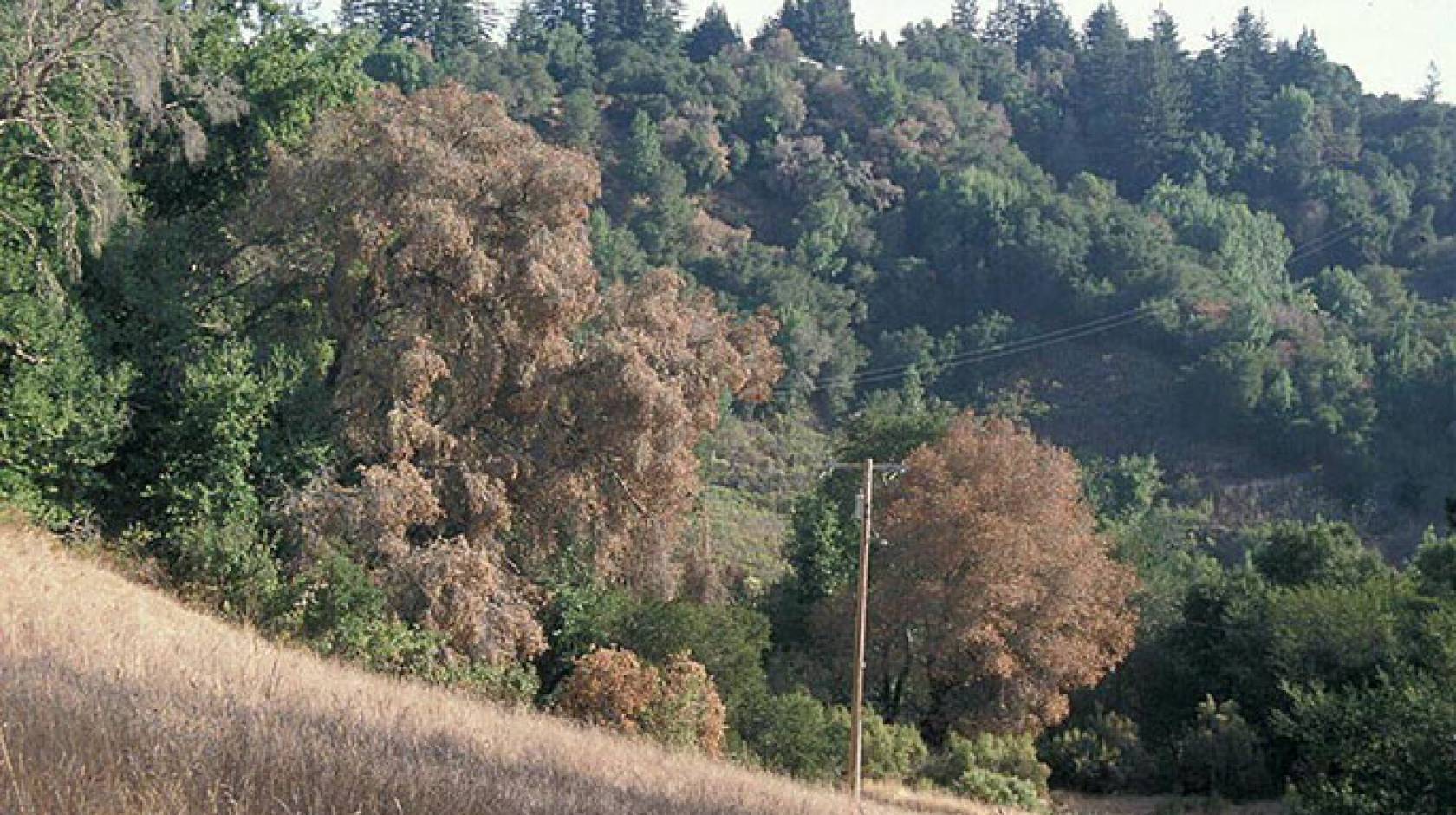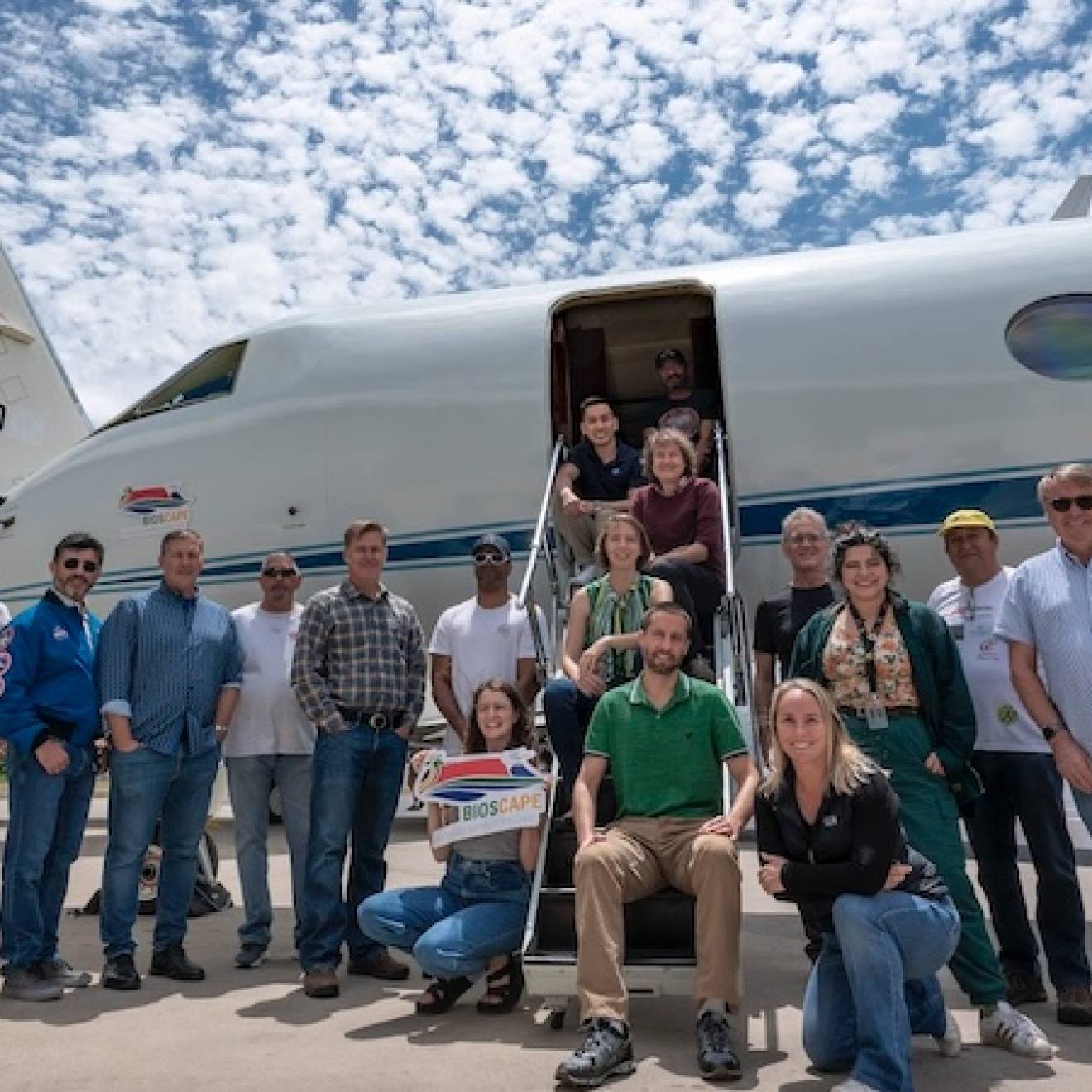Sarah Yang, UC Berkeley

Efforts to predict the emergence and spread of sudden oak death, an infectious tree-killing disease, have gotten a big boost from the work of grassroots volunteers.
A joint study reveals the power of citizen science in SOD Blitz, a survey project in which volunteers are trained to identify symptoms of sudden oak death. Led by Matteo Garbelotto at UC Berkeley and Ross Meentemeyer at North Carolina State University, the study was published today (May 1) in the journal Frontiers in Ecology and the Environment.

Credit: Douglas Schmidt/UC Berkeley
Sudden oak death is a fungus-like disease that has felled hundreds of thousands of trees in California. Crowdsourcing the survey and sampling work allowed researchers to gather information that would otherwise be too impractical and cost-prohibitive to obtain. Researchers then used the data to create a model that predicts the presence of the sudden oak death pathogen, Phytophthora ramorum, based upon such variables as rainfall and density of host trees.
Study authors compared the model based upon crowdsourced data gathered from the 2008-2013 blitzes with models using “pre-Blitz” research observations collected from 2000 to 2007. They found the SOD Blitz model to be more powerful, correctly predicting the presence of the pathogen 74 percent of the time, compared with models based on other sources of data.
“This paper shows that volunteers are as proficient as professionals in collecting data after they get some initial training,” said study principal investigator Garbelotto, an adjunct professor and cooperative extension specialist at UC Berkeley’s Department of Environmental Science, Policy and Management. “The data we got from SOD Blitz resulted in the formulation of the best predictive model yet about the spread of sudden oak death in California. Additionally, we were able to identify new infestations and identify trees that needed to be removed. In one case, in Atherton, tree removal resulted in the only successful eradication of the pathogen in North America.”
The SOD Blitz model also revealed novel findings about the spread of the disease, finding that average population density and average maximum temperature were negatively correlated with the presence of the sudden oak death pathogen.
“The population density finding is important because of the debate about the role of humans in spreading sudden oak death disease,” said Garbelotto. “From this work we can say that humans are not currently spreading the disease, and that the pathogen is doing well spreading on its own.”
Beginning the Blitz
Jean Morrell, a retired biologist living on the Santa Lucia Preserve in Monterey County, learned about sudden oak death in 2007 through an on-site presentation and subsequent hike with Garbelotto that was organized for the homeowners on the preserve. The event provided the seeds for the idea of the SOD Blitz as a way to get more people – particularly other homeowners on the preserve – engaged. For Morrell, the idea kicked off a round of phone calls and personal outreach to her neighbors.
Garbelotto launched SOD Blitz the next year, in 2008, and it has since grown into one of the largest citizen science projects in the country, incorporating 21 coastal communities in California. Each spring researchers reach out to participants through news stories, radio announcements, community groups and other recruitment methods.
Participants go through mandatory, on-the-ground training by professionals to learn how to detect and sample infected trees. Training workshops last about an hour, and then volunteers are provided with symptom detection guides, a mobile mapping tool and packets for storing leaf samples.
“When it comes to predictive models, the more data the better,” said study lead author Meentemeyer, a professor of forestry and environmental resources and director of the Center for Geospatial Analytics at North Carolina State University. “This is especially true in less-studied urban ecosystems and people’s backyards, where research scientists typically have little to no data. But the data need to be good, otherwise researchers are left dealing with a lot of noise. Motivated people, given a minimal amount of training, are clearly able to provide information that researchers need.”
‘People want to protect their trees’
In any one year, the return rate of participants ranges from 15 percent to as high as 40 percent, Garbelotto noted.
“From that first Blitz, we developed a core group of workers that have continued their interest and have followed up year to year,” said Morrell. “Sudden oak death is in all of our backyards, and it will have an effect on our neighborhoods. This is why we can engage people in the program. It not only allows participants to monitor their own space, but also, if they so desire, they can tromp out into the woods and do work in more remote areas. One only has to give up some ‘sweat equity’ to participate, and the results are available to everyone at no cost. It’s a win-win.”
Many participants are attracted to SOD Blitz by a shared love of the environment.
“I am an environmentalist, and my passion is trees. I believe they are the lungs of the Earth,” said Debbie Mendelson, who recruits SOD Blitz volunteers as a member of the Woodside Sustainability and Conservation Committee. “I think first and foremost, people want to protect their trees. Then there are folks who want to do something for the good of their community.”
Mendelson noted that SOD Blitz has also provided an opportunity to engage students in science. She has given presentations at local high schools about sudden oak death and citizen science. “I think it is a fantastic opportunity for students who have an interest in science to hear a scientist speak in an understandable and warm manner,” she said.
This year’s SOD Blitz recruitment has already begun. Community meetings will be held at various locations through early June for those interested in learning more.
Once verified, data from SOD Blitz is uploaded and freely available online.
The National Science Foundation, U.S. Forest Service, Gordon and Betty Moore Foundation and PG&E Foundation helped support this work.

